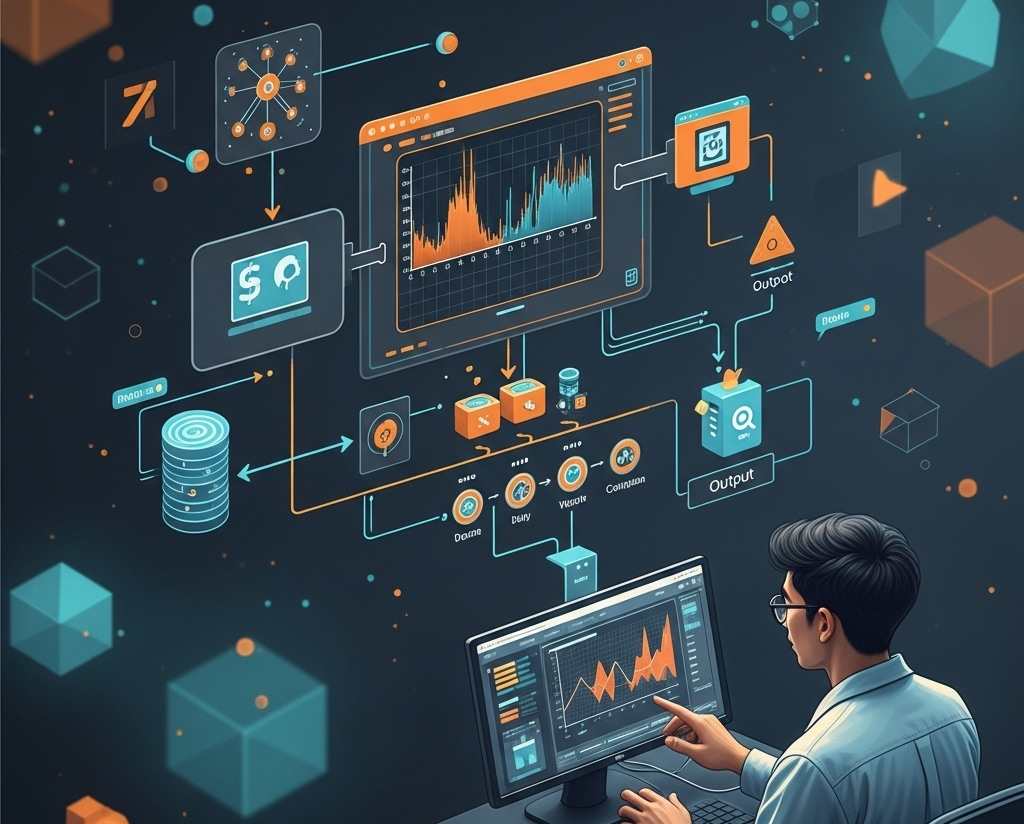
In today’s fast-paced business environment, procurement teams are under increasing pressure to optimize costs, streamline operations, and mitigate risks. Enter procurement analytics powered by artificial intelligence (AI)—a game-changer that’s revolutionizing how organizations forecast demand, manage suppliers, and make strategic decisions. By combining data-driven insights with AI’s predictive capabilities, procurement analytics is enabling smarter, faster, and more informed decision-making.
Traditional procurement relied heavily on manual processes, historical data, and gut instinct. While these methods provided some value, they often fell short in handling the complexity of modern supply chains. Procurement analytics has evolved to address these challenges by leveraging vast amounts of data—spend records, supplier performance metrics, market trends, and more—to uncover actionable insights.
Now, with AI integrated into procurement analytics, organizations can move beyond descriptive analytics (what happened) to predictive and prescriptive analytics (what will happen and what to do about it). AI algorithms analyze patterns, detect anomalies, and provide recommendations, transforming procurement into a strategic function.
AI brings a new level of sophistication to procurement analytics, enabling organizations to tackle complex challenges with precision. Here are some key ways AI is making an impact:
Accurate demand forecasting is critical for optimizing inventory and avoiding costly overstocking or stockouts. AI-powered models analyze historical purchasing data, market trends, and external factors like economic indicators or geopolitical events to predict future demand with unprecedented accuracy. Machine learning algorithms continuously refine these forecasts, adapting to changing patterns in real time.
For example, an AI model might identify a correlation between seasonal consumer behavior and raw material prices, enabling procurement teams to adjust orders proactively. This reduces waste and ensures supply chain resilience.
Supplier disruptions can cripple operations, but AI helps mitigate these risks. By analyzing supplier performance data, financial health, and external risk factors (e.g., natural disasters or regulatory changes), AI can flag potential issues before they escalate. Predictive models assign risk scores to suppliers, helping procurement teams prioritize reliable partners and develop contingency plans.
For instance, AI can alert teams to a supplier’s declining financial stability, prompting early negotiations with alternative vendors to avoid disruptions.
AI-driven spend analytics provide a granular view of procurement spending, identifying opportunities for cost savings. By categorizing and analyzing spend data, AI can uncover inefficiencies, such as maverick spending or overpriced contracts. Natural language processing (NLP) can even analyze contract terms to recommend renegotiation strategies or identify compliance issues.
For example, a global retailer used AI to analyze its procurement spend and discovered that consolidating suppliers for certain categories could save 15% annually without compromising quality.
AI doesn’t just analyze data—it provides actionable recommendations. Decision support systems powered by AI can suggest optimal suppliers, negotiate pricing based on market benchmarks, or recommend the best time to place orders. These systems integrate with enterprise resource planning (ERP) platforms, enabling seamless execution of AI-driven strategies.
For instance, an AI tool might recommend delaying a purchase order by two weeks based on a predicted drop in commodity prices, saving significant costs.
Companies across industries are already reaping the benefits of AI-powered procurement analytics. A manufacturing firm reduced its procurement costs by 10% by using AI to optimize supplier selection and contract negotiations. A pharmaceutical company leveraged AI to predict supply chain disruptions caused by regulatory changes, ensuring uninterrupted production. These success stories highlight the transformative potential of AI in procurement.
While AI offers immense potential, implementing it in procurement analytics isn’t without challenges. Data quality is paramount—AI models are only as good as the data they’re trained on. Organizations must ensure clean, structured, and comprehensive data to maximize AI’s effectiveness. Additionally, integrating AI tools with legacy systems can be complex, requiring investment in technology and training.
Ethical considerations also come into play. AI models must be transparent and free from bias to ensure fair supplier evaluations and compliance with regulations. Procurement teams should work closely with data scientists to monitor and refine AI algorithms.
The convergence of procurement analytics and AI is just the beginning. As AI technologies like generative AI and reinforcement learning mature, procurement processes will become even more autonomous and intelligent. Imagine a future where AI not only forecasts demand but also negotiates contracts, resolves disputes, and optimizes supply chains in real time—all while aligning with organizational goals.
To stay ahead, procurement leaders must embrace AI as a strategic partner, investing in the right tools, talent, and data infrastructure. Those who do will unlock unparalleled efficiency, resilience, and value in their supply chains.
Procurement analytics powered by AI is transforming the way organizations approach sourcing, forecasting, and decision-making. By harnessing predictive insights and automated recommendations, procurement teams can drive cost savings, mitigate risks, and build more resilient supply chains. As AI continues to evolve, its integration with procurement analytics will redefine what’s possible, making smarter, data-driven decisions the new standard in procurement excellence.
© 2025 Lasso Supply Chain Software LLC
Get instant access to our report on the Top Procurement Trends of 2025 by filling out the form below.

Get instant access to our report on the Top Procurement Trends of 2025.